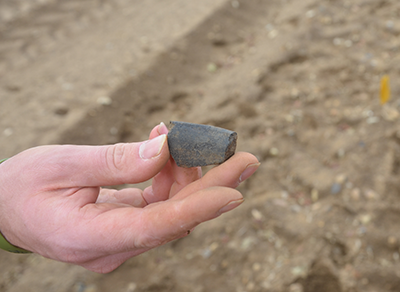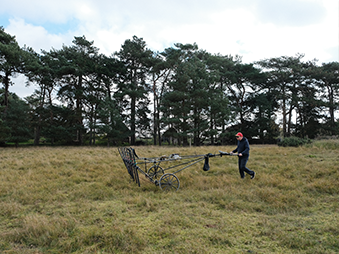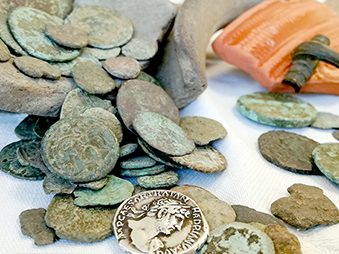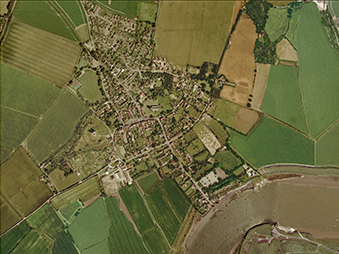Archaeological fieldwalking is the systematic collection and recording of artefacts found on the surface of ploughed fields. It is a very simple, non-invasive and useful method to assess the archaeological potential over a large area. The artefacts collected from the field’s surface can give us a hint as to what archaeology might be in the area.
Follow the guidance below to help you plan an effective fieldwaking survey.
Plan your project
Before you start, it is important to do your research and planning so you are clear about what you are doing, how you are doing it and why. Remember you must obtain permission from the landowner and tenant before starting. See our advice on Planning an Archaeological Project.When and Where?

Fieldwalking can be carried out only on ploughed fields. This is because the artefacts buried in the ground have been disturbed by agriculture, removed from their original archaeological context, and dragged into the plough soil and onto the surface of the fields.
The best time to fieldwalk is during the winter and early spring (October – March), at least a few weeks after the fields have been ploughed and weathered, with limited vegetation. A dull day is best, as sunshine causes shadows and makes it harder to see the artefacts.
Survey Methods
Make sure you conduct the fieldwalking survey systematically in either Transects or Grids.
Transect Method divides the field into a series of parallel lines at 10m intervals. This is quicker to walk and organise but only allows a sample of the field to be surveyed.
Grid Method uses a GPS to accurately lay out a grid to divide the area into squares usually of 20 metres, with each corner marked by a flag or cane. This is the most accurate method and allows whole fields to be surveyed, but takes more time to prepare.
Make sure you number your Transects or Grids and label individual bags when collecting the artefacts. This means you can record exactly where the artefacts were found on the field, which helps later when interpreting the results.
See the guides below for more details and step-by-step guidance.
What to collect?

The type of objects usually found and collected from the field’s surface are: worked flint or burnt flint, pottery, glass, clay tobacco pipe, ceramic building material, and slate, as these materials survive well in the plough soil. Materials such as animal bone, shell, and metal objects are less likely to be encountered as they are more fragile and less likely to survive on the surface of the field. If in doubt, put it in the bag and check again later.
The following materials are not considered archaeological so are not usually collected: shooting debris, asbestos, plastic, natural stones.
You may find it useful to familiarise yourself with the kinds of artefacts you are looking for to help you get your eye in! There are lots on online resources, or you can contact local societies such as the Suffolk Archaeological Field Group who are experienced at fieldwalking.
The Results
Carefully wash the objects and allow to air dry. If any metal finds or fragile material are recovered please seek advice from the Archaeological Service Finds Recording Team.
Decide what is to be kept or discarded – usually modern objects such as land drain fragments and stones are discarded.
Sort the artefacts into category groups by material type and record the objects on a spreadsheet. If you find pottery sherds it is a good idea to budget for a professional Finds Specialist to accurately identify the sherds to period and type.
This information can then be plotted on a map using GIS software.
It is best practice to write a report with the survey details and the results so it can be recorded on the Historic Environment Record.
See guides and templates below for more details.
Further Guidance
Template Fieldwalking Record Chart, SCCAS [Download PDF]
Step by Step Guide to Fieldwalking, JIGSAW Project, Cambridgeshire [View on jigsawcambs.org (PDF)]
What is Fieldwalking?, Cambridge Archaeology Field Group (2012) [View of cafg.net (PDF)]
Field Survey, Fieldwalking and Detecting Survey, Guide 15, British Archaeological Jobs Resource (2008) [View on bajr.org (PDF)]


